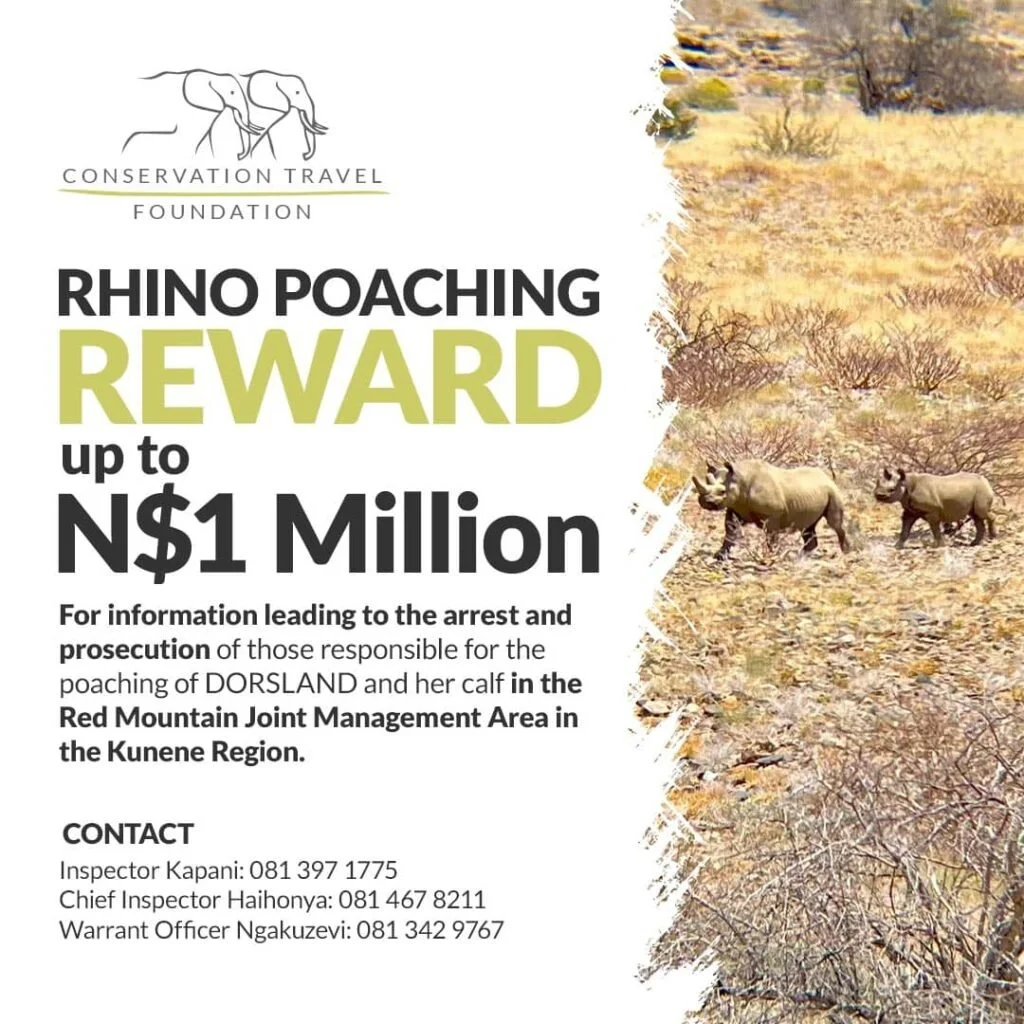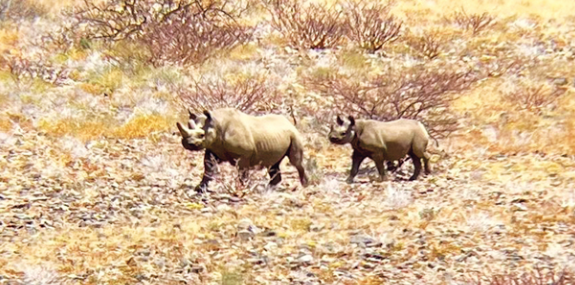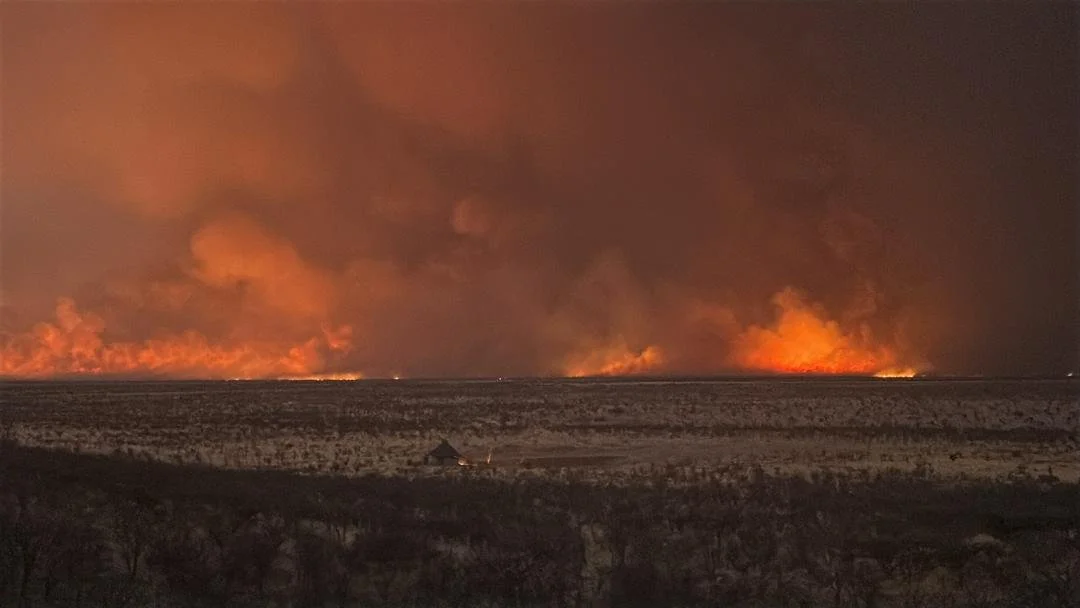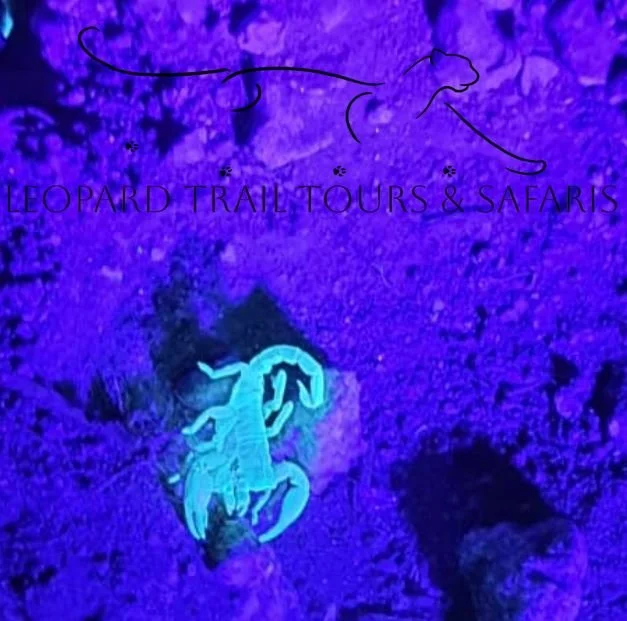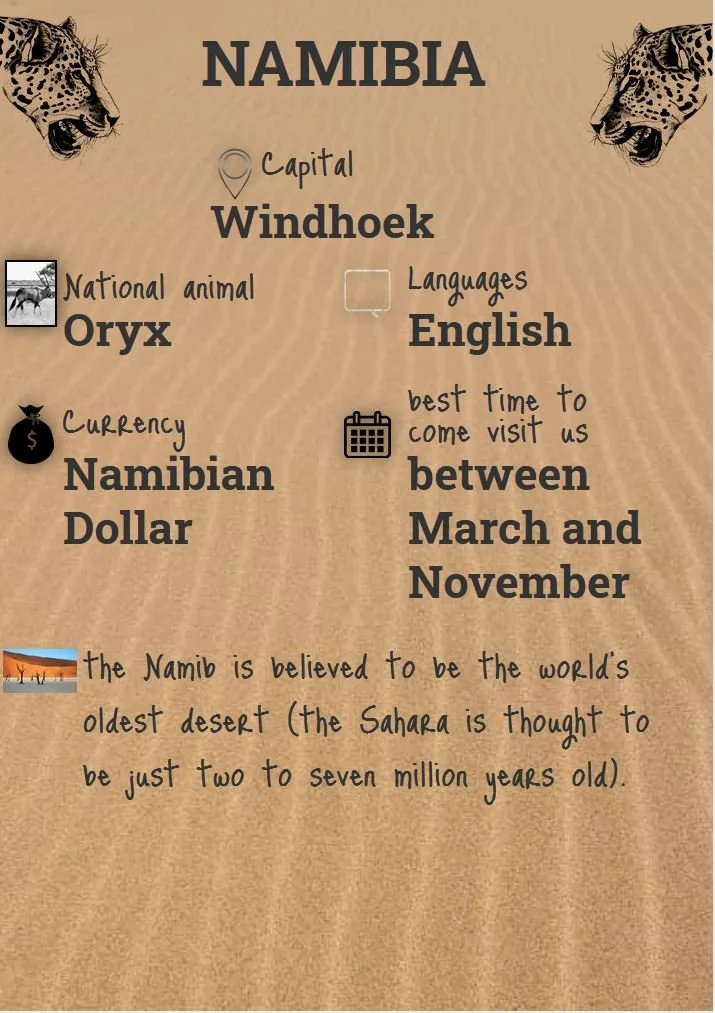Over N$800,000 raised for N$1 million reward for tips leading to rhino poachers’ arrest Dorsland – This One Hit Home
Ach, Leute… this one really got to me.
When I first heard about Dorsland – a pregnant black rhino cow, and her calf – both killed by poachers in Kunene, I just sat there for a moment. Speechless. You know, we hear about poaching now and then, but this… this felt personal. Maybe because it happened right here, in our Namibia. Maybe because she was carrying new life. Or maybe because we know how rare and precious these animals are.
But then something beautiful happened. Within just a few days, over N$800,000 was raised by Namibians – from all walks of life – to offer a N$1 million reward for information that leads to the arrest and prosecution of the culprits. That’s not small change, hey. That’s unity. That’s heart.
It started with N$100,000 from the Conservation Travel Foundation, backed by Ultimate Safaris, and then Tristan Cowley, their MD, added N$50,000 of his own. That’s not just business – that’s personal commitment. The rest? Came from us. From the people. From folks who care.
And that’s what makes me proud to be a Namibian. A Südwester. We don’t just sit back and shake our heads. We stand up. We speak out. We protect what’s ours.
Tristan said something that stuck with me: “Informants are more valuable than poachers.” And he’s right. We need to make it clear – if you know something, say something. Because this isn’t just about Dorsland. It’s about every rhino still out there. It’s about our future. Our kids deserve to grow up in a Namibia where rhinos still roam free.
So here’s my call to you:
If you want to help, or if you know someone who does, reach out to jason@conservationtravelfoundation.org. Every dollar, every rand, every euro – it all helps. And if you hear something, say something. Let’s make sure these poachers know: Namibia is watching. And we won’t let this slide.
Für Dorsland. Für unsere Wildtiere. Für unser Land.
Tragic Rhino Poaching Incident in Sorris Sorris Conservancy: Farewell to Dorsland
It is with deep sorrow that we share the heartbreaking news of a poaching incident in the Sorris Sorris Conservancy in northwestern Namibia. A female black rhino named Dorsland, known to conservationists as a key breeding animal, was shot and killed by poachers. Her horn was removed—a brutal and unmistakable sign of poaching. At the time of her death, she was with her calf, and reports indicate she was also pregnant.
This tragedy unfolded near the Palmwag Tourism Concession in the Kunene Region, an area cherished by many of our guests for its raw beauty and rich biodiversity. Sadly, even these remote and protected landscapes are not immune to the growing threat of poaching, which often rises in tandem with increased mining activity in the region.
The loss of Dorsland is not just the death of a rhino—it’s the loss of a mother, a future calf, and a vital contributor to the survival of her species. Calves left behind in such incidents often refuse to leave their mother’s side, making them vulnerable to predators or further harm. In rare cases where a calf survives, rescue teams work urgently to locate, treat, and rehabilitate them in sanctuaries.
The Ministry of Environment, Forestry and Tourism has launched an investigation into the incident. As a local tour operator and passionate advocate for Namibia’s wildlife, I urge all visitors and fellow Namibians to support efforts to protect our rhinos. Dorsland’s story is a painful reminder of what’s at stake.
Let us honor her memory by standing up for those who cannot speak for themselves. Every voice matters. Every action counts.
Emergency Landing at Meob Bay – But Everyone's Safe!
Hey fellow adventurers,
I wanted to share a recent incident that thankfully ended well – and it’s a reminder of how unpredictable travel can be, even in the most beautiful places.
On October 15th 2025, a small passenger plane operated by Eagle Eye Aviation took off from Swakopmund for a scenic flight over the iconic Sossusvlei dunes. On board were six tourists and one pilot, all excited to experience Namibia’s breathtaking landscapes from above.
But during the flight, something went wrong, and the pilot had to make an emergency landing near Meob Bay in the Hardap Region. The plane flipped over during the landing – a scary moment for sure – but here’s the good news: no one was seriously injured or killed.
Rescue teams responded quickly and professionally, and all passengers and the pilot were safely transported to Welwitschia Hospital for check-ups. Everyone is doing well, and the situation is now under investigation.
As a tour facilitator here in Namibia, I often get asked about flight safety – and while this was an unusual event, it’s reassuring to see how well the emergency response worked. Namibia’s tourism and aviation teams are trained and prepared, and this incident shows just how important that is.
If you’re planning to explore Namibia by air or land, feel free to reach out – I’m always happy to share tips, routes, and safety info to make your journey unforgettable (in the best way!).
Stay safe and keep exploring,
Etosha After the Fire – Nature Still Holding Strong
The recent fire in Etosha National Park made headlines, with around 38% of the park affected, according to Namibia’s Ministry of Environment. But as someone who’s spent time in the region and spoken to people on the ground, I can tell you: the story doesn’t end with ash and smoke.
Resilience in the Wild
Veteran guide and birder Toni K Hart shared her observations on Facebook, and they’re worth listening to. She emphasized that Namutoni was completely untouched, despite some false rumours. “There is nothing wrong with visiting Etosha now,” she wrote. “We didn’t see any dead animals in the extensive burnt areas. Birds are taking huge advantage, and this is brilliant for birdwatching.”
She also mentioned that clouds were forming near Halali, and if the kleine Regenzeit (small rainy season) arrives soon, the land will recover quickly.
Wildlife on the Move
The fire drove many animals toward waterholes, creating some unforgettable scenes. Facebook user Barrine Blom captured a moment at Okaukuejo waterhole, where over 100 elephants had gathered. It’s a powerful reminder of how wildlife adapts in times of crisis.
Not all animals escaped unharmed. Yvonne von Holtz spotted an injured elephant near Sonderkop and reported it to park staff. Her post was heartfelt:
“I will always believe that the magnitude of this tragedy could have been prevented by those in charge… What stays with me, though, is how deeply the people on the ground care. Their compassion gives me hope… not just for this elephant, but for every animal hurt in the fire.”
Hope and Healing
Despite the damage, Etosha is still very much alive. The birds are thriving, the animals are adapting, and the people working in the park are doing everything they can to help. If the rains come soon, nature will do what it always does—recover.
Why You Should Still Visit Etosha
Etosha remains one of Namibia’s most breathtaking destinations. The fire has changed parts of the landscape, yes—but it’s also revealed the strength of the ecosystem and the heart of the people protecting it.
If you’re planning a trip, don’t hesitate. The park is open, the wildlife is active, and the experience is as powerful as ever.
Would you like me to help you turn this into a downloadable PDF or prep it for a newsletter format? I can also suggest a few images or layout ideas to match the tone.
Etosha Fires Spark Concern – But Tourism Remains Open
An image of an elephant with severe burns at Charl Marais Dam at Etosha National Park has ignited fierce debate. The Ministry of Environment and Tourism initially labelled the photo “fake,” but it has since been confirmed that it was taken with a Nikon Coolpix P1000 camera on 28 September by photographer Koos Reyneke.
Etosha Fires: What’s Happening and What Tourists Should Know
Wildfires recently swept through parts of Etosha National Park, and while that sounds alarming, here’s the good news: the fires are now under control, and Etosha is still open for visitors.
Yes, some areas were affected—habitats, grazing lands, and even nearby villages—but the government and park teams acted fast. Over 300 defence force members and dozens of officials have been working hard to contain the flames and protect this iconic destination.
There’s been a bit of confusion online, especially with dramatic photos and videos making the rounds. Some of them aren’t accurate, and officials are urging travelers to stay informed through reliable sources.
Gitta Paetzold from the Hospitality Association of Namibia says communication could’ve been better from the start, but the key message now is: don’t cancel your trip. Wildlife is still being spotted, especially on the eastern side of the park, and the famous Etosha Pan is accessible.
Visitors are asked to be respectful and cautious—this is a natural disaster, after all. Keep a safe distance from any affected areas, follow park guidelines, and enjoy the beauty of Etosha responsibly.
President Netumbo Nandi-Ndaitwah has called Etosha a “lifeline” of Namibia’s tourism industry, and the government is fully committed to protecting it. So while the fires were serious, the response has been strong, and the park is bouncing back.
Bottom line? Etosha is still here, still wild, and still worth the visit.
Etosha National Park Wild fires has been contained after more than a week of burning.
confirmed animal casualties remain at nine antelopes and one pangolin that was injured during the fire.
Etosha burning
250927 Etosha burning
🔥 Veld Fire– Park Remains Safe for Visitors
Round about 34% of Etosha National Park has burnt. But around 50% of actual grazing area has been destroyed by the fires. A veld fire that spread from a nearby farm earlier this week has burned grazing land in parts of the park. Fire teams, with support from the NDF, police, and volunteers, have brought several sections under control, while smaller fires are still being monitored near Dolomite and between Olifantbad and Halali.
Importantly, no wildlife casualties have been reported as of yet, and visitor areas, lodges, and main roads remain safe. Authorities continue working to protect animals, infrastructure, and grazing areas. Guests are encouraged to remain cautious during the dry season, when fire risks are high.
Dangerous little Buggers
Scorpion with Blue Light
ALWAYS check your pants and shoes before you put them on. They really hurt bad when they sting you and some of them can be deadly.
Serene Walfish
Walfischbucht
Walfischbucht
We visited Walfishbay a while back. Visited the Logos Hope. Then we went to a Restaurant and enjoyed some beers and lekke music. Watched the tourist come by and it was just a beautiful Chill day.
Jackal in the desert
Schabrackenschakal
Jackal spotted in the desert.
Exclusive footage from Marko Lohmeier.
Goanikontes
Goanikontes
Road to Goanikontes
Goanikontes
is a hidden oasis in Namibia, nestled along the Swakop River in the heart of the Namib Desert. Despite its arid surroundings, it boasts both river and natural spring water, creating a lush contrast to the desert landscape.
This historic farm has a long agricultural tradition, with vegetable cultivation dating back to the early 20th century. It also played a role in Namibia’s colonial past, once serving as a station for the German Schutztruppe. The towering gum trees and palm trees you see today were planted by the troops, and records suggest that as early as 1893, Lieutenant Schwabe established a military outpost here.
Beyond its history, Goanikontes is a fascinating stop for geology enthusiasts, as rare, well-formed Boltwoodite crystals have been discovered in the area. It's also a perfect base for exploring nearby natural wonders like the eerie Moon Landscape and the famous Welwitschia Drive.
Today, the old farmhouse has been transformed into a charming restaurant and guest lodge, offering visitors a chance to relax and soak in the unique blend of history, nature, and tranquility that Goanikontes has to offer.
Staying safe in Namibia
Namibia is generally a safe destination, but like any country, it’s important to take precautions. Here’s a comprehensive safety guide for you:
1. General Safety Tips
✅ Stay Aware of Your Surroundings – Be mindful of your belongings and avoid looking distracted, especially in busy areas.
✅ Use Reputable Tour Operators – If booking excursions, ensure the provider is licensed and experienced.
✅ Avoid Walking Alone at Night – Stick to well-lit, busy areas and use private transport instead of walking.
✅ Emergency Contacts – Save important numbers, including your country’s embassy, local police (10111), and medical services.
2. Road Safety
✅ Drive Carefully – Namibia has long stretches of open roads; always watch for wildlife and stray animals. Remember we are driving on the left side of the road.
✅ Avoid Night Driving – Many accidents occur at night due to poor visibility and animals crossing roads.
✅ Stick to Speed Limits – Gravel roads can be slippery similar to iced up or snowed roads, so drive cautiously and avoid sudden braking.
✅ Carry a Spare Tire & Extra Fuel – Distances between fuel stations can be long, especially in remote areas.
✅ Inform Someone of Your Route – If traveling to remote areas, let someone know your itinerary.
3. Wildlife & Nature Safety
✅ Respect Wild Animals – Never approach or feed wildlife, even if they seem calm.
✅ Follow Park Guidelines – Stick to designated roads and avoid getting out of your vehicle in national parks.
✅ Beware of Snakes & Scorpions – Shake out shoes and clothing before wearing them, especially in desert areas.
✅ Stay Hydrated – Namibia’s climate is dry; drink plenty of water to avoid dehydration. Especially in Sossusvlei, The Fishriver Canyon and Brandberg areas.
✅ Use Sun Protection – Wear sunscreen, sunglasses, and a hat to protect against strong UV rays.
4. Personal & Property Safety
✅ Keep Valuables Secure – Use a hotel safe for passports, cash, and important documents. Don’t leave your Backpacks or Hand bags lying in the open in a vehicle.
✅ Avoid Flashy Jewelry & Large Sums of Cash – This reduces the risk of theft.
✅ Use ATMs Wisely – Withdraw cash in well-lit, secure areas and avoid assistance from strangers.
✅ Be Cautious of Scams – Politely decline unsolicited help from strangers, especially in busy places.
✅ Lock Doors & Windows – Whether in hotels, lodges, or rental cars, always secure your belongings.
5. Health & Medical Precautions
✅ Medical Insurance – Ensure you have travel insurance covering medical emergencies.
✅ Malaria Prevention – If visiting Etosha, Caprivi, or the Kavango/ Zambezi regions, consider anti-malarial medication and use mosquito repellent. Or just drink lots of Tonic.
✅ Emergency Medical Care – Private hospitals in major cities provide good care, but remote areas have limited facilities.
6. Cultural & Legal Considerations
✅ Respect Local Customs – Namibians are friendly; a respectful attitude goes a long way.
✅ Follow Drone Laws – Drone use is restricted in certain areas; check regulations before flying. Especially in Etosha. Also do not Geotag Rhinos.
✅ No Drinking & Driving – Strict laws apply, and police checkpoints are common.
✅ Stay Updated on Political Situations – Namibia is politically stable, but it’s wise to stay informed.
Final Thought:
Namibia is a breathtaking and rewarding destination! By following these safety tips, you’ll enjoy a smooth, worry-free adventure.


